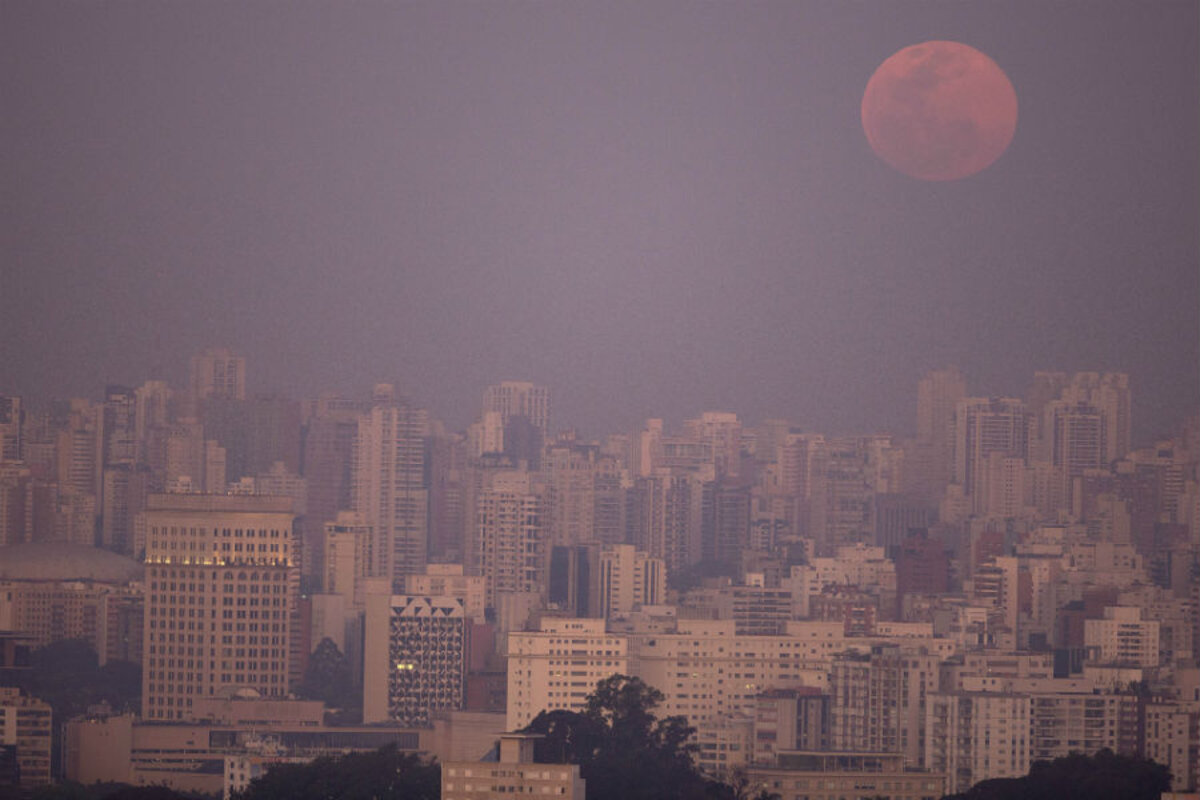Rare supermoon eclipse coming: How does it work?
Loading...
A supermoon will coincide with a total lunar eclipse on Sept. 27, a phenomenon not seen from Earth in more than 30 years.
The rare show will take place over 72 minutes, as Earth's shadow sweeps across the moon as our planet crosses between the sun and moon.
The supermoon, or what scientists call a perigee, is just optics. The moon does not actually grow any bigger, it only appears that way from Earth because it is slightly closer than usual.
"Because the orbit of the moon is not a perfect circle, the moon is sometimes closer to the Earth than at other times during its orbit," said Noah Petro, deputy project scientist for the Lunar Reconnaissance Orbiter at NASA’s Goddard Space Flight Center in Greenbelt, Maryland, in a . "When the moon is farthest away, it’s known as apogee, and when it’s closest it’s known as perigee. On Sept. 27, we’re going to have a perigee full moon – the closest full moon of the year."
At perigee, the moon will be only 221,753 miles away, compared to its average distance of 238,900 miles. The relative closeness will make the moon look 14 percent larger and 30 percent brighter in the sky than an apogee full moon.
Lunar eclipses typically occur at least twice a year, and 228 will occur in the 21st century alone, according to NASA. Lunar eclipses are easy to predict, and the space agency knows the exact timing of eclipses a thousand years into the future. It’s just a matter of knowing where Earth, the sun, and the moon are at a given point in time, noted Dr. Petro.
As for the supermoon and a lunar eclipse occurring simultaneously, Petro said, "It’s just planetary dynamics. The orbit of the moon around Earth is inclined to the axis of Earth and the orbital plane of all these things just falls into place every once in a while. When , you might get three to four eclipses in a row or a supermoon and an eclipse happening."
The last supermoon to coincide with a lunar eclipse occurred in 1982, and the next won’t happen until 2033. "That’s rare because it’s something an entire generation may not have seen," said Petro.
And when (and where) exactly should you head outside? The total eclipse will be visible to North and South America, Europe, Africa, and parts of West Asia and the eastern Pacific.
Earth’s shadow will begin to dim the full moon slightly beginning at 8:11 p.m. EDT. A noticeable shadow will begin to fall on the moon at 9:07 p.m., and the total eclipse will start at 10:11 p.m. The precise moment of perigee will come at 10:00 p.m., and the peak of the eclipse – the moment when the centers of the Earth, moon, and sun are all perfectly aligned – will be 10:51 p.m.





